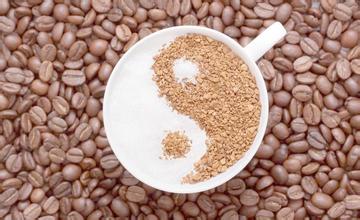Introduction of Sidamo Coffee Flavor in Sidamo Coffee Manor, Ethiopia
According to the above four different modes of production, Ethiopian coffee can be divided into nine major coffee producing areas, including five boutique coffee areas: Sidamo, Yegashefi, Harald, Lim and Lekampu. and four general commercial bean producing areas: Gemma, Irugbo, Tibby and Bekaa. The sun or water washing methods are used in each district, and different treatment methods also affect the flavor. At present, the sun method accounts for about 80%, and washing accounts for about ⒛%. Sidamo and Yejia Xuefei are mainly washed by water, supplemented by the sun, while Lim and Tiebi producing areas are mainly washed by water. The sun-dried beans are mainly Harald, Gemma, Lekamputi and Yilu Gbagbo.
The Sidamo producing area, which is 1400-2200 meters above sea level, is a famous boutique coffee area in southern Ethiopia, bordering Kenya. The washed Sidamo is light green, the beans are small, the growth oval, the fruit is full, the average quality is good, the smell is fragrant and mellow, the coffee raw beans are slightly gray, some places are thick and some are small, the acidity is soft and strong, the mellow is suitable, sweet and spicy, it is one of the courtyard coffee in the highlands of southern Ethiopia.
Unlike ordinary African coffee, Sidamo has clear acidity, smooth taste and delicate floral smell. The taste is unique and mellow, the taste is chic and pleasing, and the slowly rising end rhyme contains chic sweetness. A drop of entrance, endless aftertaste, wild beauty, is considered to be a thorny rose in coffee

Important Notice :
前街咖啡 FrontStreet Coffee has moved to new addredd:
FrontStreet Coffee Address: 315,Donghua East Road,GuangZhou
Tel:020 38364473
- Prev

Light and pure Costa Rican coffee taste introduction Fire Phoenix Manor Costa Rican coffee
Tarrazu in Costa Rica is one of the major coffee producing areas in the world. The coffee produced is light and pure in flavor and pleasant in aroma. Costa Rica, with its fertile volcanic soil and good drainage, is the first country in Central America to grow coffee and bananas for commercial value. Coffee and bananas are the country's main exports. In 1729, coffee was introduced from Cuba to Goth.
- Next

Indonesian coffee producing area estate introduction Indonesian coffee taste flavor Kahayangan estate
Java coffee beans have lost their proud name: mocha java, because in the early 1970s farmers cut down traditional coffee trees and planted high-yield and profitable beans instead. In Java, most coffee beans are dried in hot machines, so they have lost the authenticity of coffee and become sour after roasting.
Related
- Does Rose Summer choose Blue, Green or Red? Detailed explanation of Rose Summer Coffee plots and Classification in Panamanian Jade Manor
- What is the difference between the origin, producing area, processing plant, cooperative and manor of coffee beans?
- How fine does the espresso powder fit? how to grind the espresso?
- Sca coffee roasting degree color card coffee roasting degree 8 roasting color values what do you mean?
- The practice of lattes: how to make lattes at home
- Introduction to Indonesian Fine Coffee beans-- Java Coffee producing area of Indonesian Arabica Coffee
- How much will the flavor of light and medium roasted rose summer be expressed? What baking level is rose summer suitable for?
- Introduction to the characteristics of washing, sun-drying or wet-planing coffee commonly used in Mantenin, Indonesia
- Price characteristics of Arabica Coffee Bean Starbucks introduction to Manning Coffee Bean Taste producing area Variety Manor
- What is the authentic Yega flavor? What are the flavor characteristics of the really excellent Yejasuffi coffee beans?

